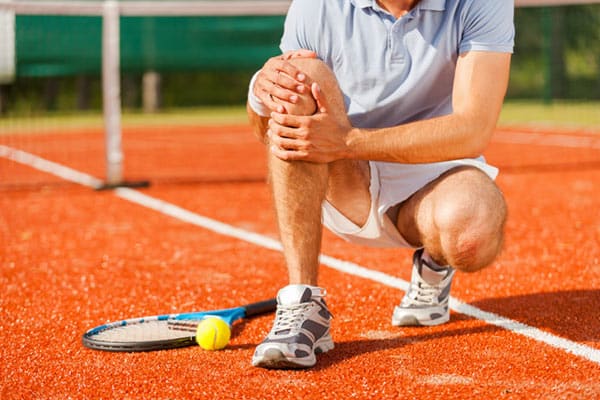
The ACL is a very commonly-injured area of the knee—especially for athletes. Although this injury is often thought to primarily affect female athletes, studies have shown that they do not occur more frequently in females.
Most ACL injuries are the result of direct contact, and for that reason the injury is most common among football players. With the right training and education, we may be able to reduce the likelihood of an ACL injury.
How Do ACL Injuries Happen?
The ACL runs diagonally through the middle of the knee joint, helping to keep it stable. The ACL is tough, but it is still a small bit of tissue. Sometimes, sudden force from a fall or twist of the knee can cause the ACL to tear.
Direct player-to-player contact is often a contributing factor to an ACL injury. Another factor may be that adolescent athletes are not taught how to correctly perform basic sports maneuvers, like running, squatting, or landing from a jump. We must also consider that many young athletes are playing sports year-round, with little to no breaks in between, and they are often pushed to be very competitive early on. All of these factors combined can greatly increase a young athlete’s chances of an ACL injury.
What Does an ACL Injury Feel Like?
Usually, the most notable symptom of an ACL tear is an audible “pop” that can be heard when the ACL tears. Your knee may feel like it is giving out from under you. The knee often becomes unstable, and it may be impossible to move the knee through its full range of motion. Pain is usually immediate, but swelling often occurs within 24 hours of the injury.
Although it is possible to receive nonsurgical treatment for a torn ACL, it will not heal without surgery. For this reason, most athletes will opt to undergo ACL surgery, during which a tendon graft is used to reconstruct the torn ACL. Following surgery, months of rehab will be required to restore strength and range of motion in the knee. Many athletes are able to eventually return to sports, but some are either unable or choose not to for fear of further injury.
Some studies have found that early-onset knee arthritis is common in athletes who undergo ACL reconstruction. Researchers speculate that no matter how well-placed the new ligament is, there will still be some change to the athlete’s gait that may wear away the cartilage in the knee.
How Can ACL Injuries Be Prevented?
There will always be some occurrence of ACL injuries in athletes, even with precautionary measures. Accidents happen. However, athletes and coaches can take steps to reduce the amount of ACL injuries.
- Athletes should always warm up and stretch before any game or practice. In particular, focus on the thighs, calves, and hips.
- Work to strengthen the hips and thighs to provide more support to the knees. Squats and lunges, when done correctly, can be very helpful with this.
- Do drills that help improve balance and agility. This is important to help reduce injuries due to falls and collisions.
- Learn how to properly land a jump. Knees should not collapse inward upon landing; both knees and feet should be pointing straight forward. Athletes should practice landing correctly until it becomes second nature.
- Rest! Young athletes should not feel pressure to play a sport year-round. They should be encouraged to take rest days to avoid exhaustion. The body needs time to recover after strenuous physical activity. Furthermore, exhaustion can lead to improper form, which increases an athlete’s chances of an injury.
If we teach athletes the right techniques and precautionary measures when they are younger, they will be less likely to end up with a torn ACL as they continue their athletic pursuits. Whether or not your child decides to pursue sports in high school, college, and beyond, they shouldn’t have the decision made for them by an injury that could have been prevented.